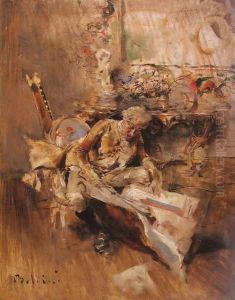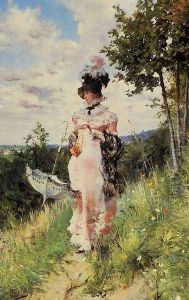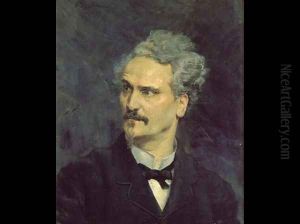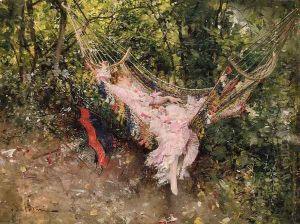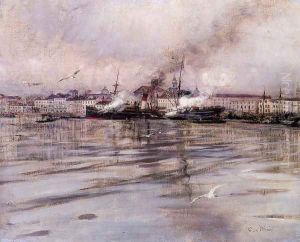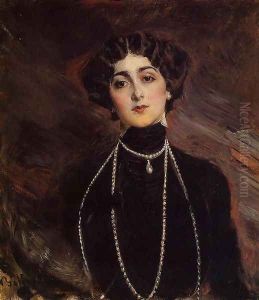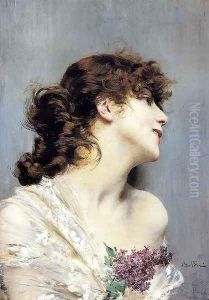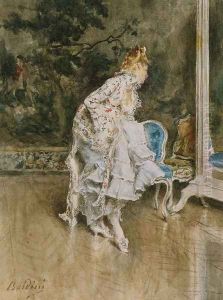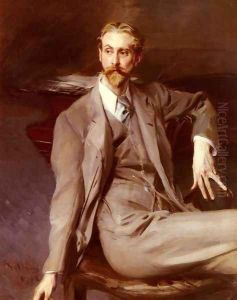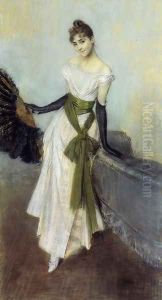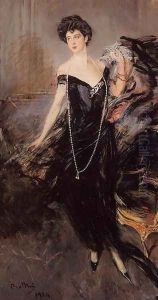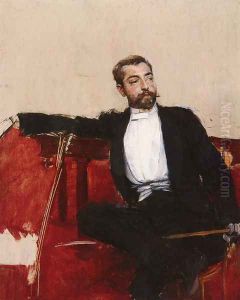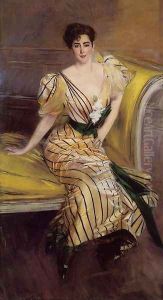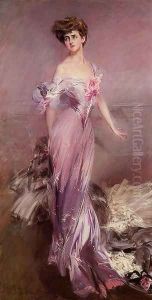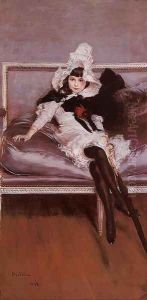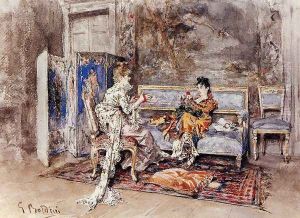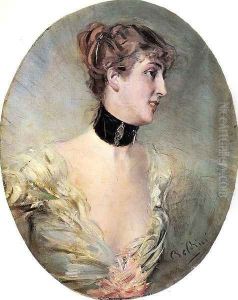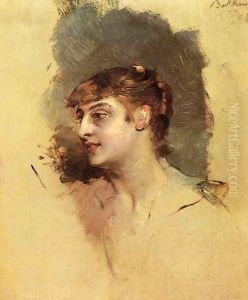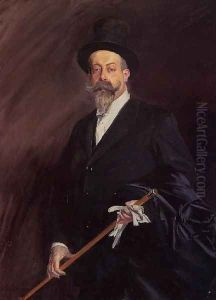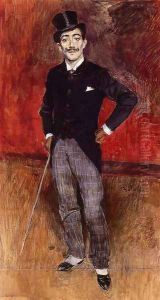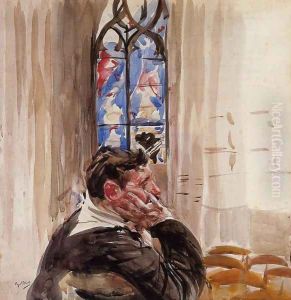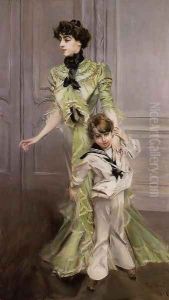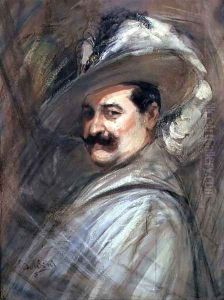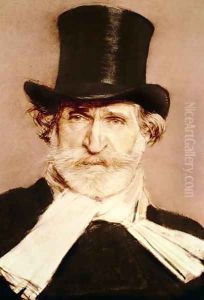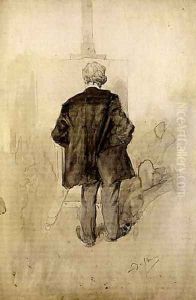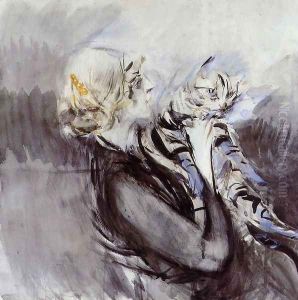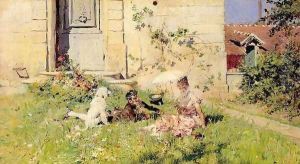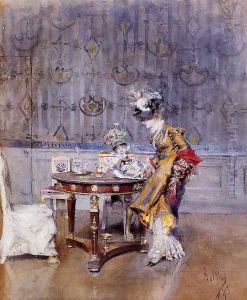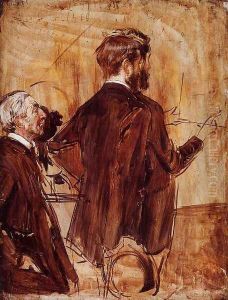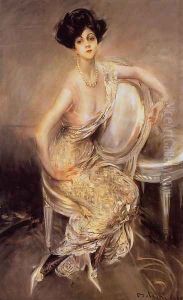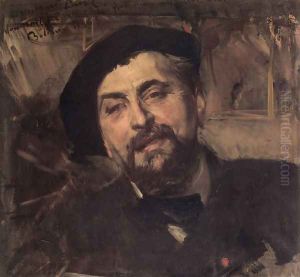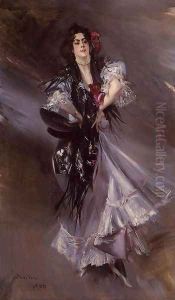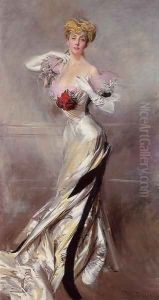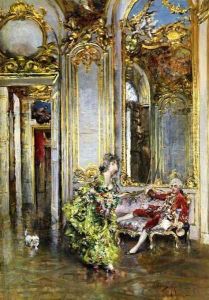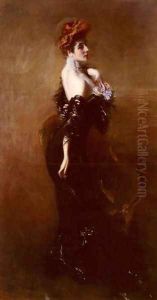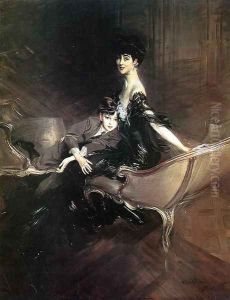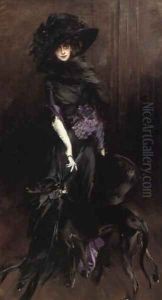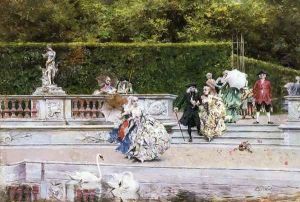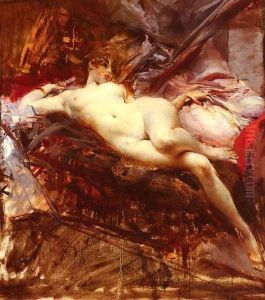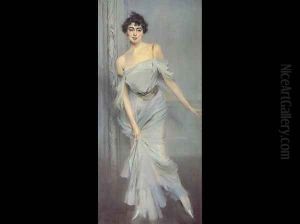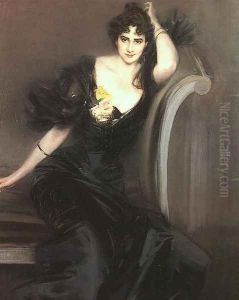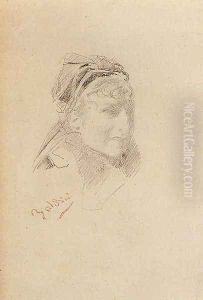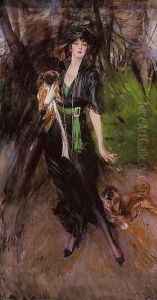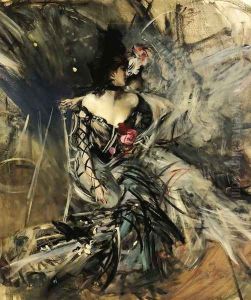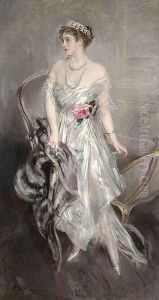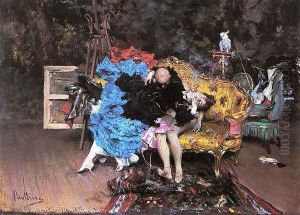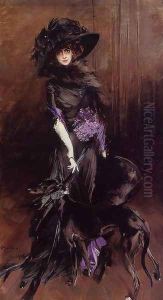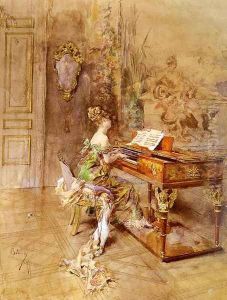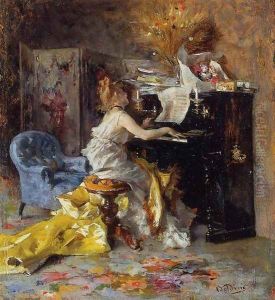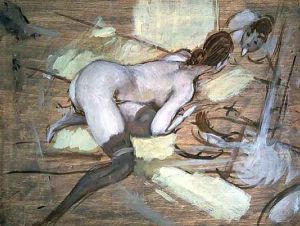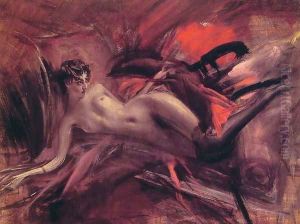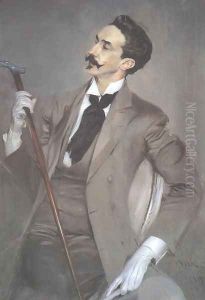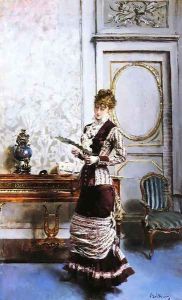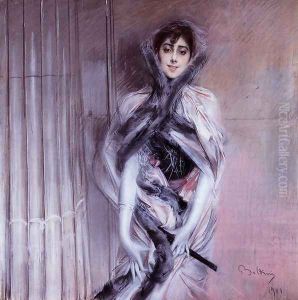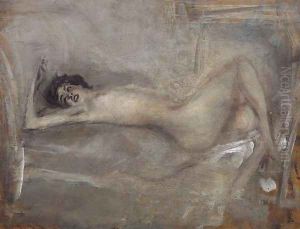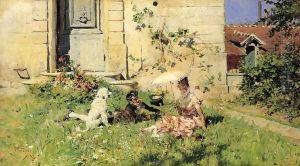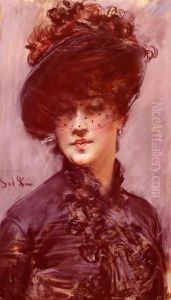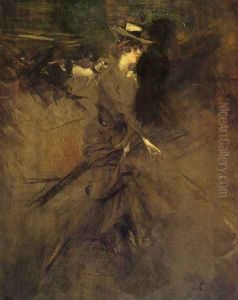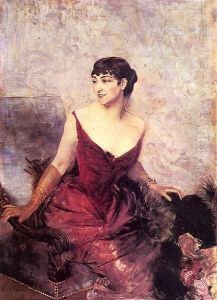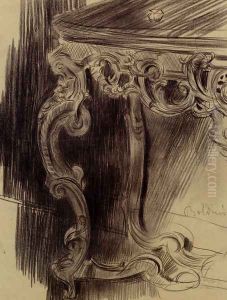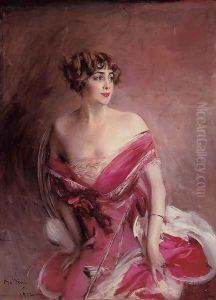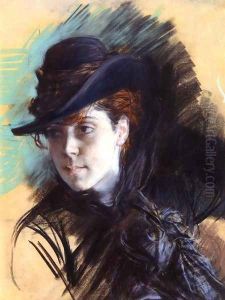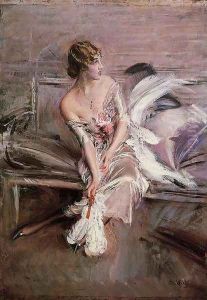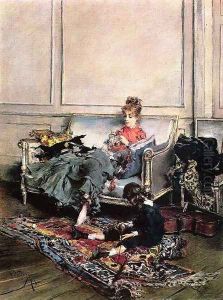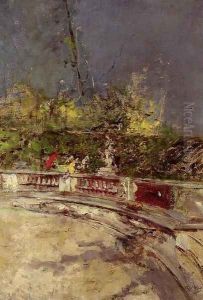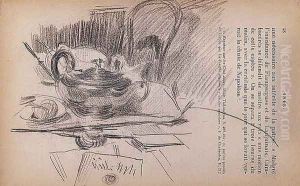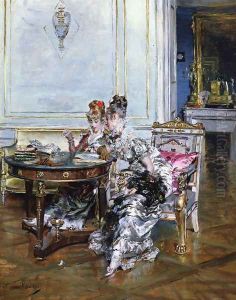Giovanni Boldini Paintings
Giovanni Boldini was a distinguished Italian portraitist and figure painter, renowned for his dynamic and stylish portrayals of high society figures of the late 19th and early 20th centuries. Born in Ferrara, Italy, on December 31, 1842, into a family of artists, Boldini displayed an early inclination towards painting. He initially studied at the Accademia di Belle Arti in Florence, where he was influenced by the works of the Macchiaioli group, a precursor to the Impressionists, emphasizing light and color over precise outlines.
In 1871, Boldini moved to Paris, the epicenter of the art world at the time. It was here that he truly flourished, immersing himself in the city's vibrant artistic scene. Paris provided him the perfect backdrop to refine his distinctive style, characterized by elongated figures, swift brushstrokes, and a luminous palette. His ability to capture the elegance and essence of his subjects quickly garnered the attention of society's elite, including famous actresses, aristocrats, and even fellow artists.
Boldini's work during this period is often compared to that of his contemporaries, such as John Singer Sargent and James McNeill Whistler, yet he maintained a unique flair that set his portraits apart. His depiction of movement and his skillful use of light to sculpt the figures in his paintings were particularly admired. Boldini became known as the 'Master of Swish' because of the vibrant sense of movement in his brushwork.
Aside from portraits, Boldini also painted landscapes and genre scenes, and his travels across Europe influenced his work significantly. However, it was his portraits that made him a sought-after artist among the wealthy and the famous of the Belle Époque era. His most notable works include portraits of Giuseppe Verdi, Countess de Martel, and the Marchesa Luisa Casati, among others.
Giovanni Boldini's legacy is that of a master portraitist who captured the spirit and elegance of an era. His works continue to be celebrated for their vitality, elegance, and the unique insight they provide into the personalities and fashions of the late 19th and early 20th centuries. Boldini passed away in Paris on July 11, 1931, leaving behind a significant body of work that continues to captivate and inspire.
